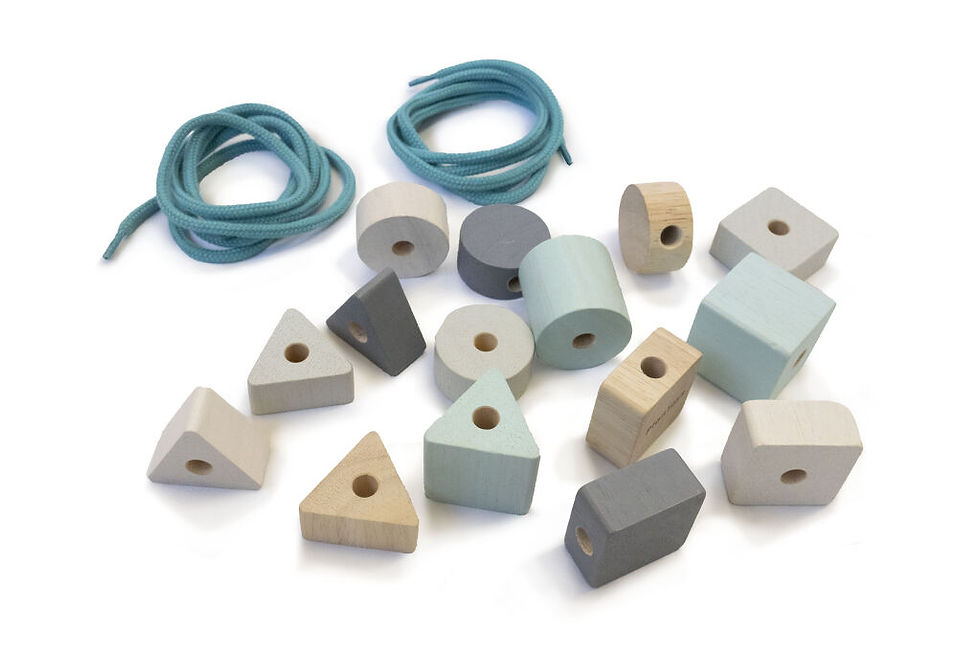The Incredible Importance of Fine Motor Skills
- Julia Kallmes

- Sep 10, 2024
- 3 min read
Here at Kaleidoscope Learning, we are a little obsessed with fine motor skills. Why, you may ask? Well, helping children develop their fine motor muscles sets them up for success in so many arenas. Indeed, academic, practical, and artistic pursuits all require strong fine motor manipulation.

What Are “Fine Motor Skills?”
To begin, motor skills are, “[The] underlying internal processes responsible for moving the body or parts of the body in space.” We tend to differentiate between “fine motor” and “gross motor” skills.
Fine motor = small muscle movements, often with the hand, fingers, and wrist
Real-life examples: writing with a pencil, cutting with scissors, typing on a keyboard, tying a shoe
Gross motor = large muscle movements, often with our torso and limbs
Real-life examples: running, jumping, riding a bike
Cultivating both fine and gross motor skills proves essential to healthy development. In this article, we will focus on the former.
Why Are Fine Motor Skills So Important, Anyway?
In a study titled “Fine Motor Skills and Early Comprehension of the World: Two New School Readiness Indicators,” the authors examined both traditional kindergarten readiness indicators such as early math and reading knowledge as well as less-commonly considered metrics, including fine and gross motor skills. They discovered that “fine motor skills are an additional strong predictor of later achievement,” whereas gross motor skills were not. In simpler terms, children who had strong fine motor skills entering kindergarten performed well academically later in elementary school.
They noted that the connection is unsurprising given how fine motor skills are embedded in many academic tasks, including writing, typing, and reading. However, the link between movement and learning proves more foundational.
The authors relay that multidisciplinary research “suggests that motor and cognitive development are inextricably linked. Literature suggests that the linkage occurs primarily for two reasons: (a) many types of cognitive activities utilize specialized control and modulation functions located in the cerebellum and basal ganglia that develop during motor acquisition, and (b) some of the neural infrastructure linking the prefrontal and motor areas built to adaptively control the learning process during motor development is also used to control learning in cognitive development.“ Essentially, due to the architecture of our brain, early fine motor practice creates strong neural connections that can later assist with cognitive tasks.
We want children to learn and succeed, and this impulse leads to extra study hours, practice tests, and problem sets. However, the authors conclude that we should trade pencils and worksheets for materials that will give children that strong base. They conclude, “Our results suggest that the focus of interventions should shift from a primary emphasis on changing the direct math and reading instructional environment to interventions that build better foundational skills of attention and fine motor skills and a better understanding of the world outside schools...Paradoxically, higher long-term achievement in math and reading may require reduced direct emphasis on math and reading and more time and stronger curricula outside math and reading.” I will allow that last sentence to speak for itself.
How Can Families Promote Fine Motor Skills at Home?
Great news: fine motor activities can be low- or no-cost, and many are embedded in the daily life of the home, which I detail below. In addition, every Friday between 9:30 a.m. and 12:00 p.m., our staff will demonstrate an easy, inexpensive, FUN way to exercise fine motor muscles. Fine Motor Fridays are free and open to the public. Kaleidoscope also has a plethora of toys and activities in its library that refine fine motor skills. If you are interested in becoming a member in order to access our toy library, you can learn more here.

Self-Care:
Dressing
Buttoning
Zipping
Eating
Preparing food (chopping, peeling, spooning, stirring)
Cleaning (spraying, scrubbing, wiping)
Brushing teeth and hair
Art:
Painting
Manipulating clay/Play Doh/putty
Cutting with scissors
Gluing
Drawing
Play
Puzzles
Building with Legos, Duplos, blocks, or train tracks
Grasping bowls
Water play- squeezing sponges or basters, pouring
Lacing
Tonging
Scooping
This blog is adapted and reposted with permission from Monarch Montessori School.
Source: Cameron, C. E., Cottone, E. A., Murrah, W. M., & Grissmer, D. W. (2016). How Are Motor Skills Linked to Children’s School Performance and Academic Achievement? Child Development Perspectives, 10(2), 93–98.









Comments